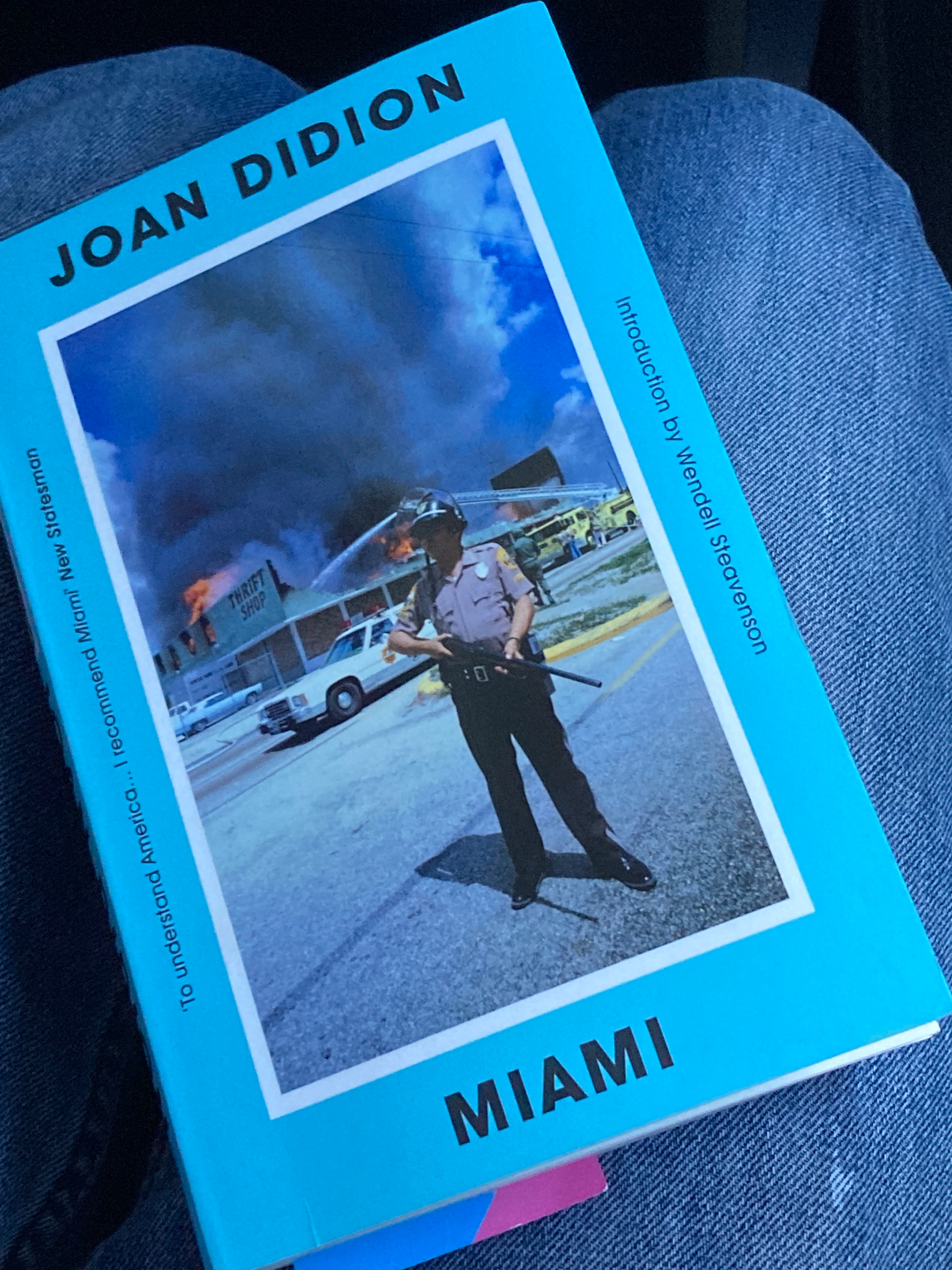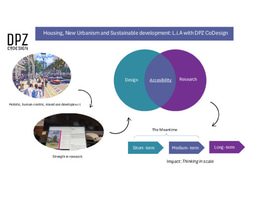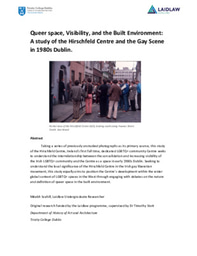unsteady ground - LiA Blogpost

A certain liquidity suffused everything about the place. Causeways and bridges and even Brickell Avenue did not stay put but rose and fell, allowing the masts ships to glide along the marble and glass facades of the unleased office buildings. The buildings themselves seemed to swim free against the sky: they had grown up in Miami during the recent money years an architecture which appeared to have slipped its moorings, a not inappropriate style for terrain which only had a provisional claim on being land at all. ”
– Joan Didion, Miami, 1987
I spent the flight to Miami International airport reading Joan Didion’s Miami. The book, with its bright, art deco-blue cover had been gifted to me the night before by friends. The picture emblazoned on the front cover, a gun toting police officer standing in front of a burning thrift store, seemed cherry-picked to give my poor Mam an aneurysm as she helped me repack my bag once last time before dropping me to the airport. The Miami I met was far more polished than Joan Didion’s observations in the 1980s, but the overall impression of a city in perpetual adolescence persisted: The shiny new skyline of Brickell built in the last ten years jutting up from concrete overpasses in various stages of construction.

[image of book cover]
I spent 6 weeks in Miami, undertaking my LiA at DPZ CoDesign, a planning and urban design firm. I’d ended up becoming increasingly more interested in the built environment, both historic and contemporary, following on from my research on Dublin’s Hirschfeld Centre last summer. Leaders within the New Urbanism movement, DPZ’s approach to urbanism foregrounds sustainability, and is at its core, human centric. My work with them focused specifically on sustainable design practices, in the context of rising sea levels, and intensifying tropical storms as a result of climate change. In collaboration with Galina Tachieva, managing partner of DPZ, I led the research into adaptation as a climate concept, which will hopefully form the basis for a future publication on adaptive design measures, tentatively called In the Meantime: Elevating and Strengthening Coastal Communities
The relevancy of the work I was doing was underscored by the climate in Miami. The majority of my LiA took place in the month of august – peak hurricane season in the south of Florida. Tropical storm Debby made landfall as a category 1 storm in Florida the week of my arrival. Though the worst of the storm hit the west coast of the state, it dominated news and general conversation. Day-to-day the weather in Miami was hot and humid, with frequent thunderstorms. Downpours were sudden and intense and simply had to be waited out.

[image of me sheltering from the rain]
In addition to my primary work of In the Meantime, I ended up lending a hand in the office wide preparations for a charette in Orlando. The charette process is a distinguishing feature of DPZ’s practice. The charette is a week-long work session, usually conducted on site or in proximity of a project. Meetings are held throughout the week with key stakeholders in attendance, providing feedback on design team’s evolving masterplan. The weeks leading up to the Orlando charette saw the office in a flurry of activity. I took over research for a potential habitat restoration at the sight. This was a novel experience. Most of my prior experience of research, both in university and in Laidlaw, had been largely independent. My work in preparation for the charette was intensely collaborative, and dynamic. As the rest of the team’s research evolved, so mine too had to shift, often with quick turnaround times in between deadlines. It was intense, but incredibly rewarding.
My evenings and weekends were spent exploring various areas of the city, and learning more about the history of the region. The history of the city and its interrelation with its nature and climate continue to fascinate me, particularly in its contradictions. Didion’s assessment of the terrain of the city having barely a provisional claim on being land at all remained at the forefront of my mind. Miami is a young city built on reclaimed swamp land, where property developers seem to be able to keep building high rise condominiums on the porous limestone that water, both fresh and salt, is slowly corroding away. [1] Walking around the historic art deco district on Miami beach, I began to notice this limestone. At first glance, it appeared to be marble, but on closer inspection, it was this porous, fossil-rich limestone, plastered in bright paint. Its fossils recall when nearly all of the state of Florida was below sea-level during the inter-glacial period thousands of years ago. Now painted in vivid colours, it’s a quintessentially ‘Miami’ vernacular. And a reminder perhaps of the future of the state. Without a drastic reductions in CO2 levels, its very likely that at some point in the next couple hundred years, Miami will once again be underwater.

[images, close ups of two examples of painted coral stone]
It is very easy to feel defeatist about both current and potential future impacts of climate change, and to let that defeatism lead to inaction. Though my time in Miami was spent becoming increasingly more aware of the stark reality of threat of climate change, it was also empowering. The work I conducted consciously focused on the ‘meantime,’ the here and now and near future, where action is possible. As a history student, I spend a lot of time thinking about the past, but the built environment perhaps provides a way in which I might be able to impact the future. Whatever impact I might have on climate change discourse through the research I conducted at DPZ will if at all, be so minor and imperceptible so as to be insignificant. But on a personal level, it gave me a greater sense of agency, and has given me lots of ideas about how I might go about making an impact in the future. Returning home from LiA, my time in Miami has begun to acquire the liquidity of a dream. But I remain incredibly grateful for the time I spent there, and the many wonderful people I met.
[1] Ariza, Mario Alejandro. Disposable City: Miami’s Future on the Shores of Climate Catastrophe. Hachette UK, 2020, 8.



Please sign in
If you are a registered user on Laidlaw Scholars Network, please sign in